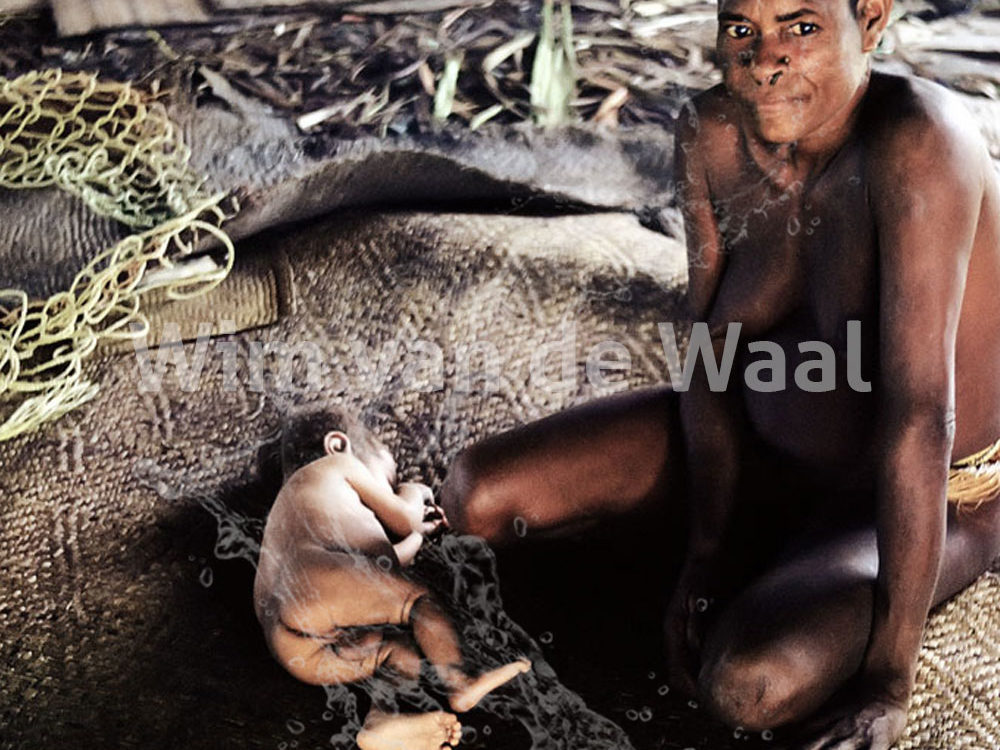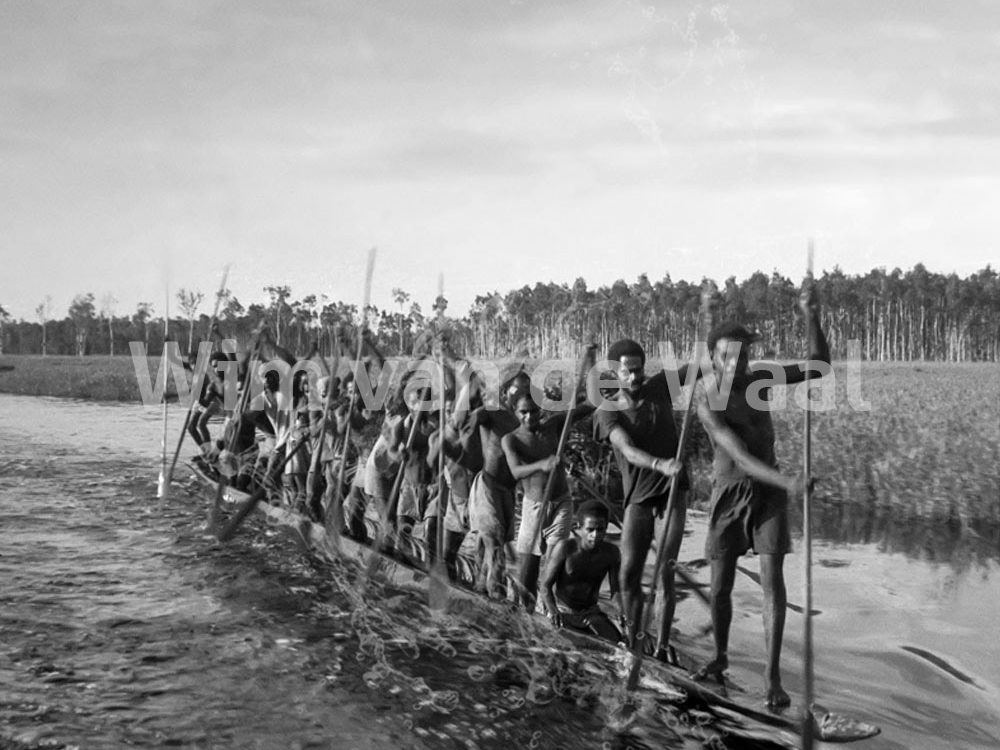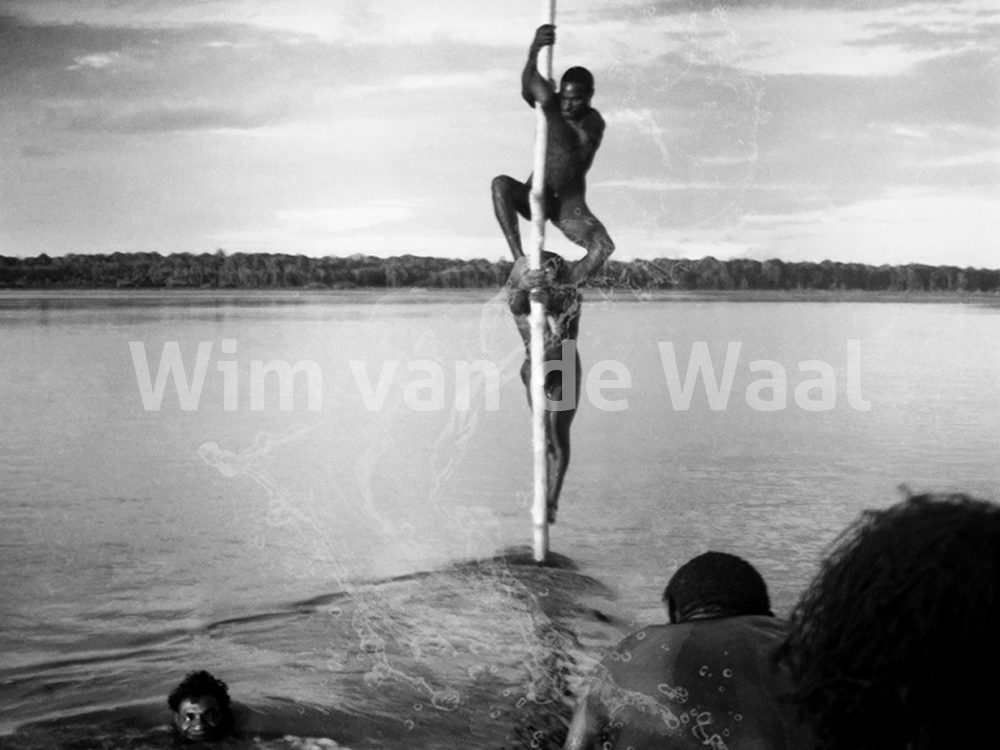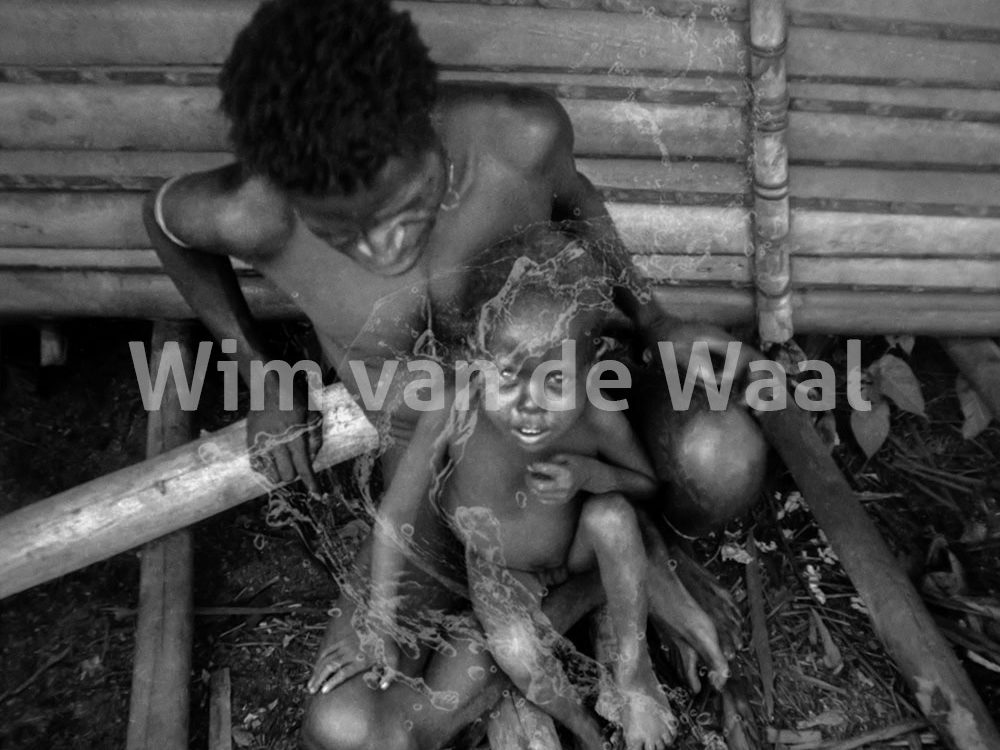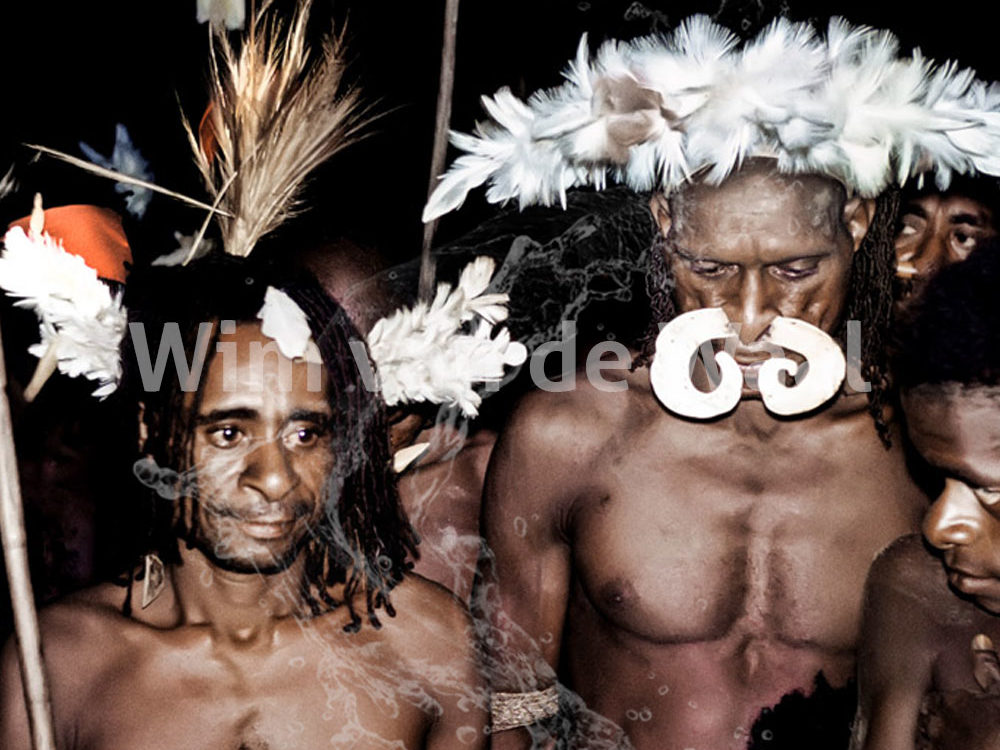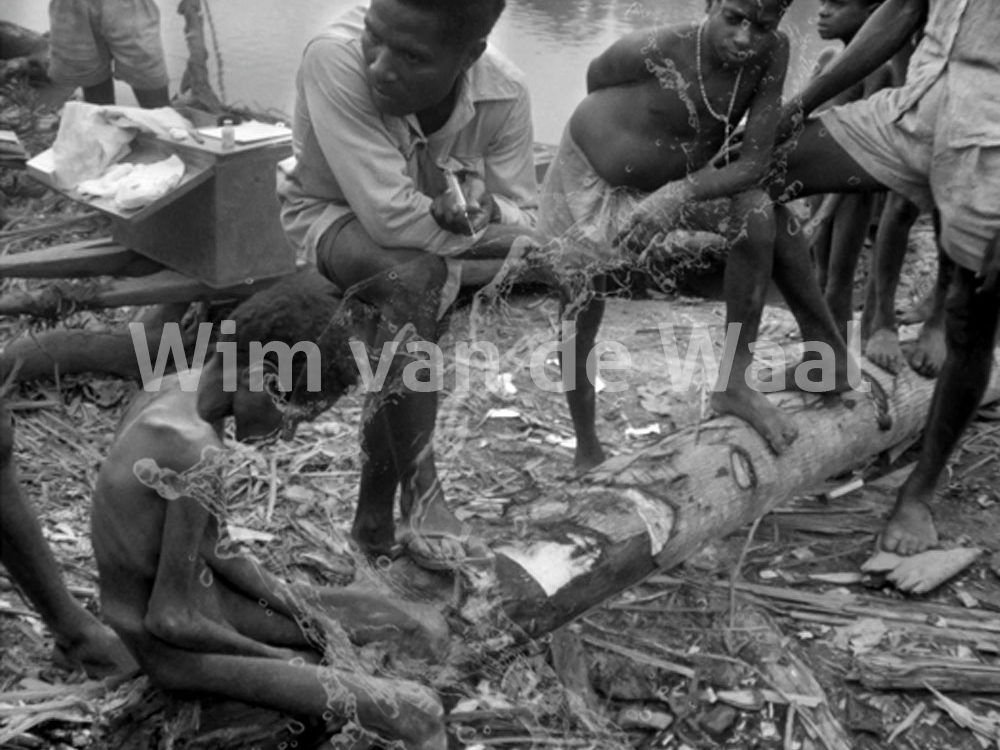The name „Asmat“ comes most probably from the words As Akat, which according to the Asmat means: „the right man“. Others say it derives from the word Osamat meaning „man from tree“.
The Asmat is an ethnic group of former cannibals and headhunters that live along the remote southwest coast of Papua. They have been often described as a wood-age culture dedicated to hunting and fishing, famed for their elaborate woodcarving.
The approximately 70,000 Asmat people are scattered in 100 villages across a 27,000 square kilometer area, encompassing some of the last unexplored regions of the world. It comprises a low-lying territory of bog forest, endless swamps, and meandering rivers emptying into the Arafura Sea.
Dutch outposts, missionary settlements, and foreign expeditions finally made inroads into this isolated community only in the 1950’s and 60’s, introducing steel fishing hooks, knives and metal axes. The territory became formally part of Indonesia in 1969, after a heavily disputed referendum.
